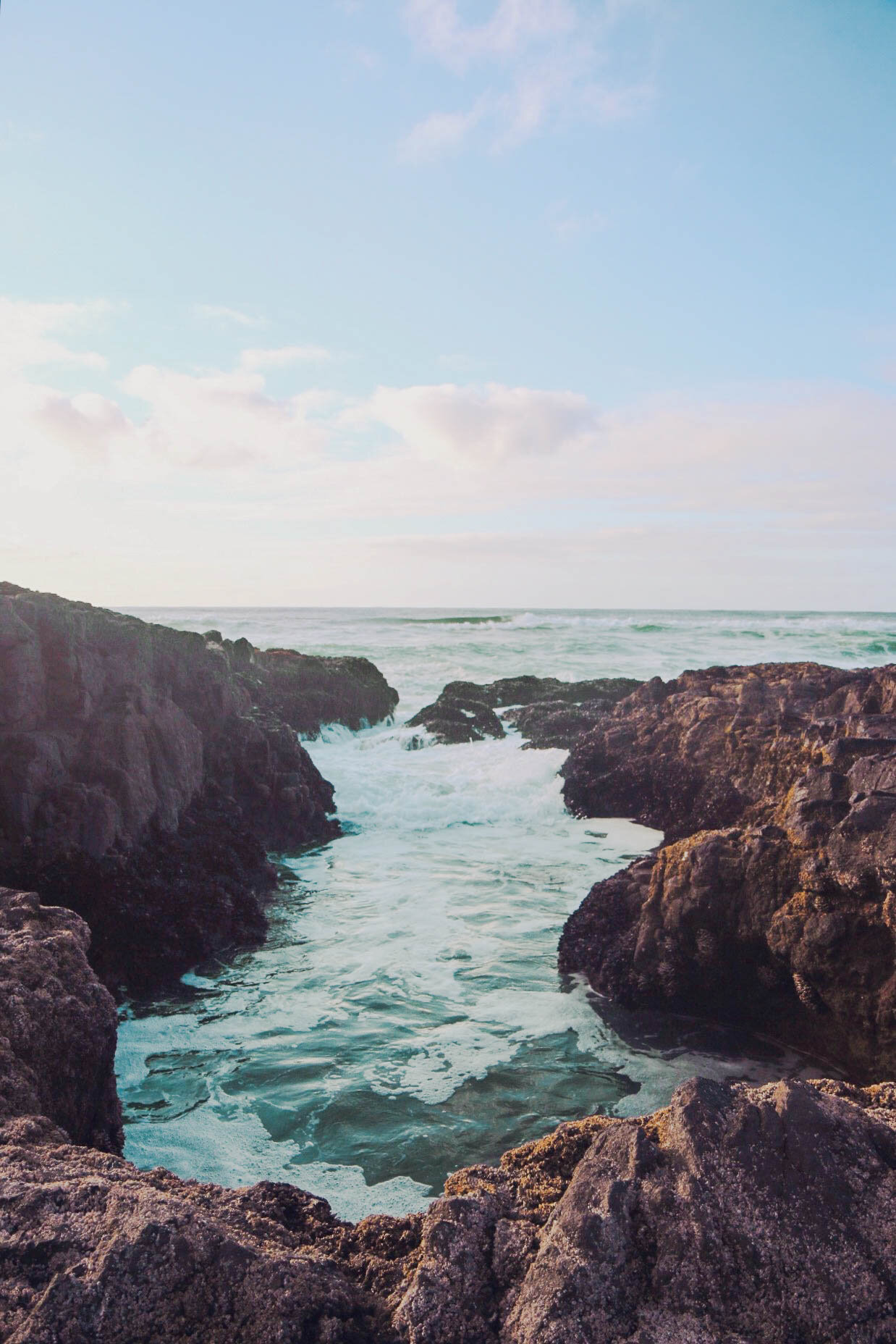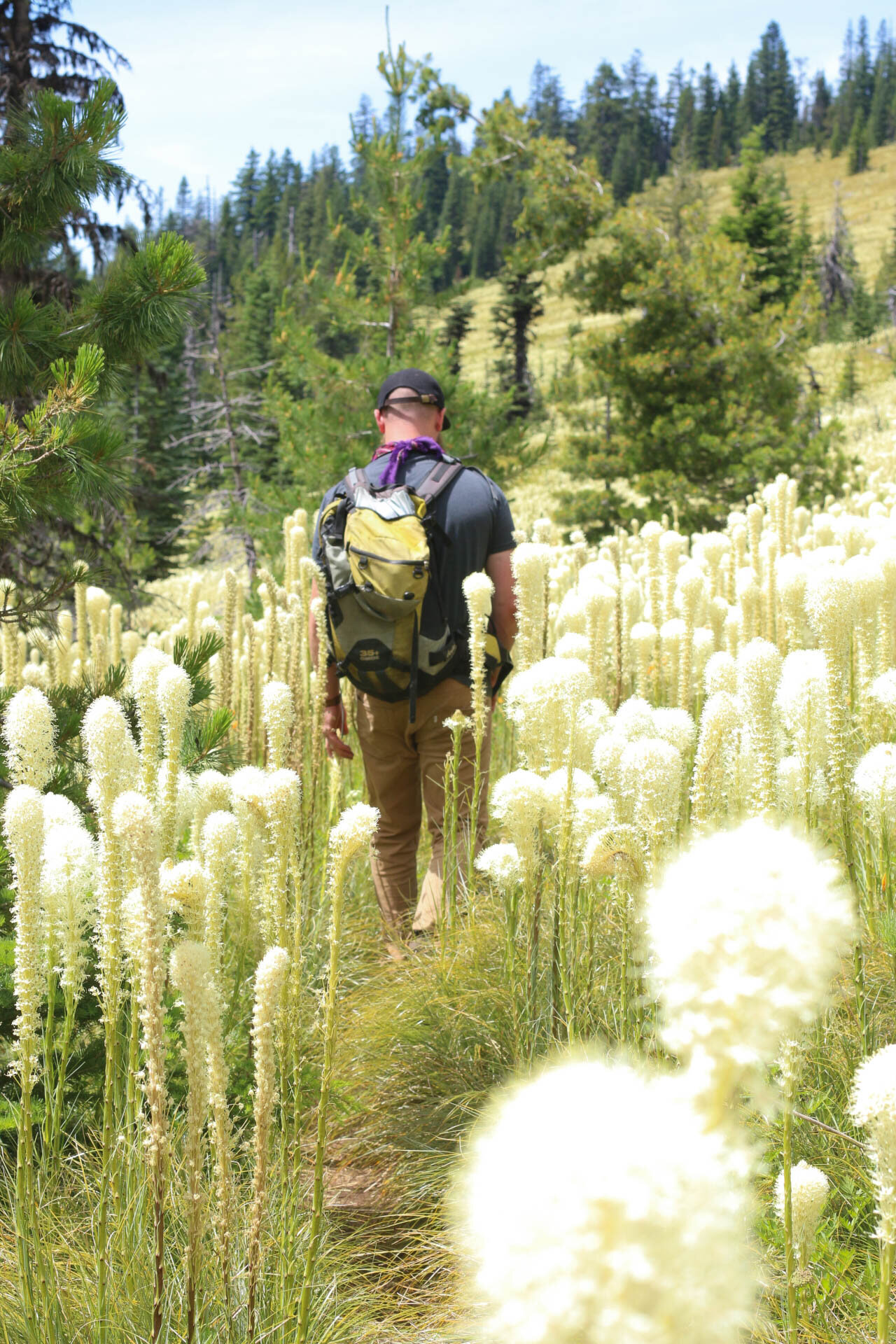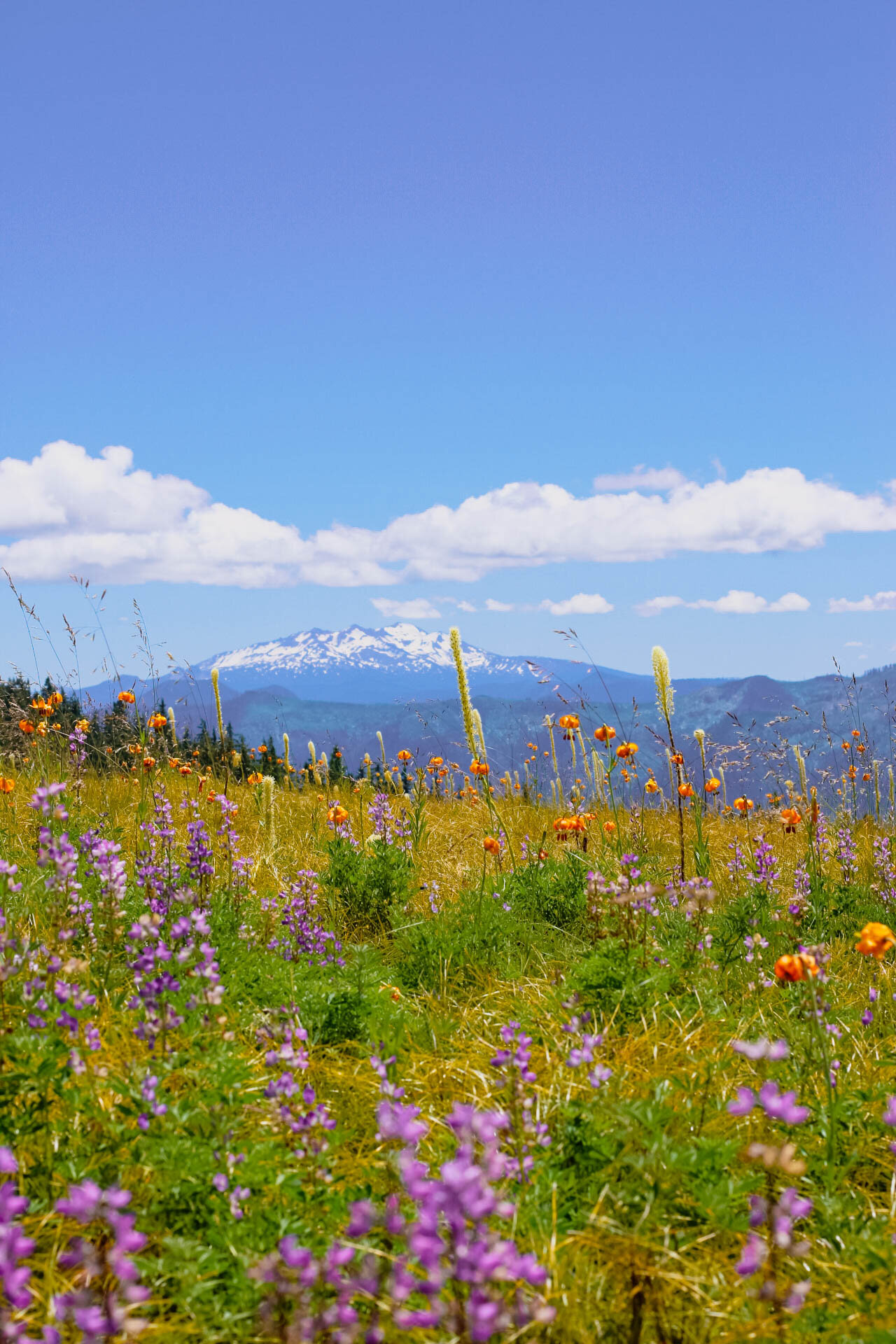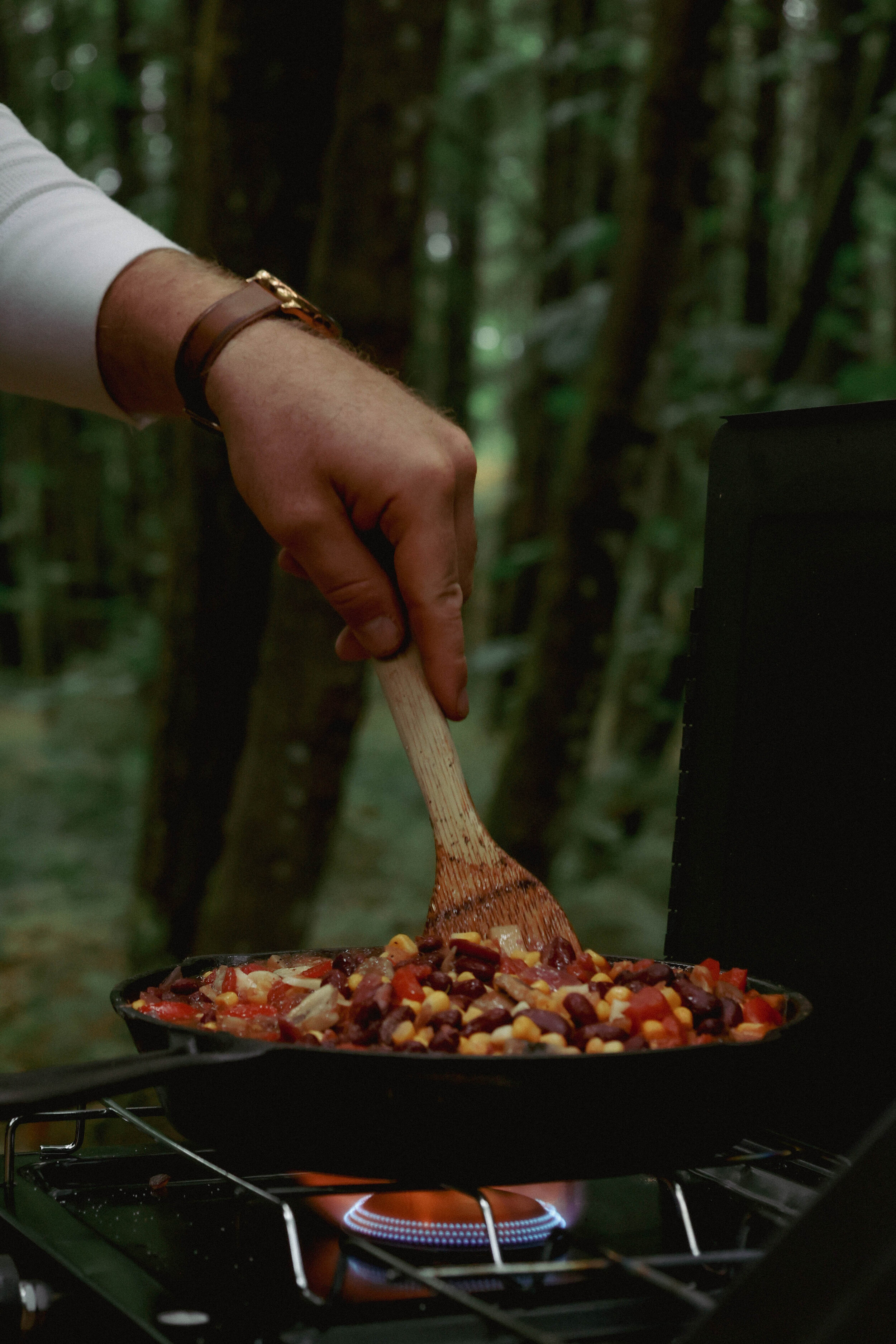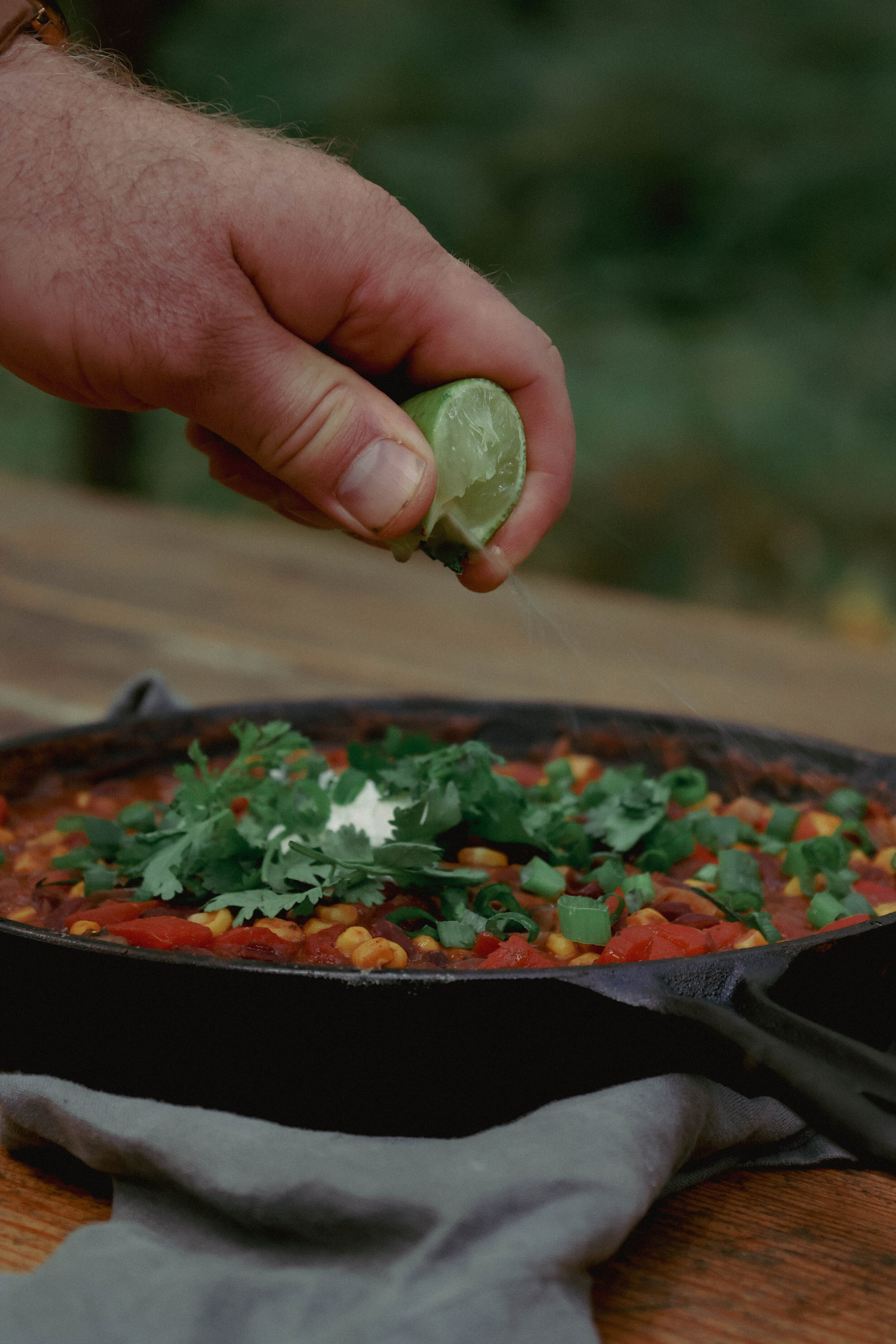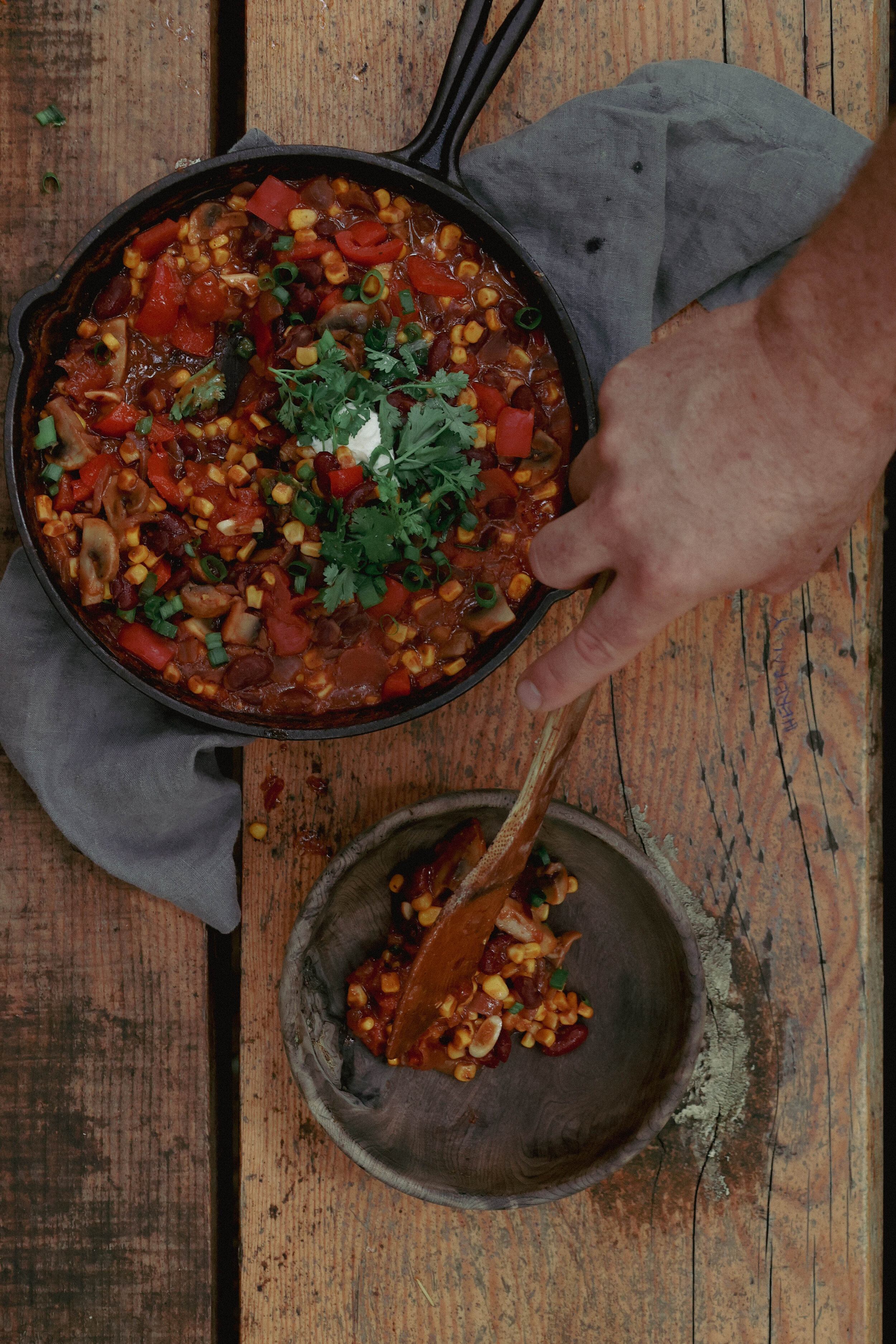By Jennifer Sala
There I was, an herbalist with a problem...
For many years I suffered from recurrent infection that attacked my lungs every winter. Here in Maine, winter is bitingly cold and takes up the better part of the year, or so it seems. Now, I’m not much of a wildcrafter but this much I have done – after all, the dog still needed a long walk on warmer days (though she was aging and not much for being out in the bitter cold too long) and I couldn’t handle a few rounds of antibiotics and steroids Every. Single. Winter. I was basically a super frustrated herbalist with that canary in the coalmine constitution. Something had to give, nothing could touch the infection. When I made this, I was privileged to live in a tiny rural coastline neighborhood with a neighbor who owned plenty of wooded shoreland ripe with winter foragables and had given me permission to do my thing.
One unseasonably warm day walking the dog out there I noticed a conspicuous greenish brown seaweed-like something growing on a tree right next to the trail – how had I never noticed it before? It distinctly looked like the pulmonary lobes of lungs. So, considering the Doctrine of Signatures philosophy, I was inspired to learn more. I went home and looked this strangely beautiful stuff up and found it to be a lichen known as lungwort, not to be confused with the flowering sort. It can be referred to by its scientific name Lobaria pulmonaria instead, which alludes to its resemblance to the pulmonary lobes, to avoid confusion. It turns out, when dry it turns more gray and camouflaged. When moist it is more green, and presumably more mucilaginous so this is when I would recommend harvesting it. It has several acid components, including fatty acids, and tannins. It is an astringent, demulcent, and tonic herb and the best extraction method seemed to be through tincturing. It is said to be beneficial for wound healing as well, but here we’re more focused on its affinity for coughs, tuberculosis, chronic lung infections, asthma, pleurisy, and emphysema. Sounds like a winner! It is especially indicated if coughing up bloody sputum as it stays internal bleeding (and slows heavy menstruation). Turns out, there was lots of it growing in the area so I only took a single fair-sized specimen, enough for a jar of tincture. I decided to try brewing a lung healing tincture and added it fresh.
By this time, I had been practicing home herbalism for a few years and was already familiarized with some other handy, local herbs. I was in love with pine needle tea and it indeed is lovely for agitated lungs. When reading on foraging Eastern white pine you often see the description of five needles to a cluster and this is how Pinus strobus is identified. I always verify this when meeting a new one, especially if I intend to ask it for resin/pitch/sap/needles, but I cannot recall a time this was not the configuration I found. This may be circumstantial because of locality but if you’re skittish about wild plant ID like I am, this is one you’re probably safe with, in my experience. You may have noticed in the winter when everything is dead that there will be shredded pine cones atop the snow, this is because within the pine cone are the seeds (or “pine nuts”) which non-hibernating birds and mammals rely on for a seriously impressive nutritional profile throughout the winter (you may know pine nuts from pesto as well – they are expensive but utterly delicious and nourishing). I had two of these in the middle of my yard and we had just had a storm so there were a few still fresh branches in the snow. Easy peasy.
Like most pines and such, Pinus strobus is high in volatile oil and is often used in essential oil blends, especially around Christmas. Pine resin salve is a well known and powerful antiseptic and restorative herbal first aid remedy but is also fantastic internally. The resin salve is used in herbal first aid for its cell restoration power and because it is powerfully anti-microbial and antiseptic. The resin is extracted from the leaves as it is throughout the tree like blood to an animal and, while it does come out in water, tincture is best. It is also excreted from the tree trunk itself in a collectible volume, a dab will usually do.
The leaves make a reinforcing, affirming tea that is spectacular with raw honey. Its flavor is sweet, citric, slightly sour with a warm rising essence. Either way, taken internally, white pine is aromatic and uplifting, making it functionally an expectorating decongestant (as well as antidepressant, tonic, and anti-catarhal). It is quite vulnerary, helping your body to repair and regenerate cells. Containing considerable amounts of Vitamins C and E, it is anti-oxidant and strengthens the immune system. Resin excretion is the tree’s way of protecting itself from infection. So naturally, it works on us the same way. It also is high in flavonoids, especially chrysin, which makes it subtly similar to chamomile and they are tasty together. White pine is considered of assistance in coughs, colds, flu, bronchitis, pneumonia, sinusitis, and sinus or bronchial congestion. It also extracts fresh in honey quite nicely. This takes a few weeks, as does tincture. I haven’t had much luck drying or storing the needles without an issue of some sort but it can be harvested easily year round in my area so it’s not much of a deterrent.
Eastern white pine has been appreciated by many tribes. In my local area, the Wabanaki Confederacy, have been using it for an extremely long time. There are accounts of indigenous folk in New England coming to the aid of European voyagers suffering scurvy with pine needle tea. Unfortunately, it was greatly over-exploited for over 150 years after white settlement for structure framing, woodworking, and ship building. However, they can live hundreds of years if left to thrive. Few elder stands still exist today, though it is in no way threatened, at least locally. In Maine, it is our state tree and it’s absolutely everywhere. You don’t even have to cut the tree at all to harvest leaves, as the delicate branches snap off in the wind and each yields seemlingly gazillions of the long rich needles. I made the lovely, magnificent Pinus strobus the primary of my tincture.
Another local herb I had fallen in love with was Usnea barbata, also known as old man’s beard. It is a pale green, thin and tangled mass that grows out of conifers and deciduous hardwoods, most notably in my mind on oak and apple trees. It is a lichen, which means it is a symbiotic relationship between an algae and a fungus. It cannot grow in highly polluted air (nor can Lobaria pulmonaria) and is an indicator both of decent air quality. It can also be a sign of declining air quality if you see a decrease in its localized population over time. That being said, it also absorbs air pollution so please take that into consideration when looking for a supply. Indigenous tribes use it as an expectorant and wound dressing, as well as for absorbing menses. It is quite dry, cold, dispersive, and bitter. I like to imagine its tendrils reaching around inside my body and looking for sickness to suck up and out.
I find it is best gathered in the winter and works most impactfully when the lungs are hot, packed, and boggy, though I admittedly munch a little like a moose every time I find it thriving. Not super tasty, but I love it anyhow. It could be confused with Spanish moss (which we don’t have around here anyway) but is distinguished by a quick test. If you gently pull on a thick strand of Usnea it should stretch like a rubber band, exposing a white tendril inside the green coating. This is brittle and non-stretchy in Spanish moss.
Usnea thriving off open ocean air
Usnea has a long history of medicinal applications all over the world. It is not known when it was first used, though there are records of some varieties being used in Chinese medicine for over three thousand years. It is sometimes thought to have been first used in Arabic medicine. It was also used in Japan, Korea, parts of the eventual Soviet Union, Germany, and - as discussed - in precolonized North America. It is anti-inflammatory, expectorant, a bitter, disinfectant, broad-spectrum antibiotic, and anti-fungal. It’s antibiotic capacity works on gram positive bacteria, the type that retains crystal violet dye after decolorization in a petri dish (gram negative bacterial cells have an outer layer that prohibits this and must be broken down to kill the bacteria). As you likely will not know whether your bacteria is gram positive or negative, it is best paired with another antibiotic. It flushes systemic infections (like that of the kidneys, bladder, and lymphatic system – we love anything that helps the lymphatics and filters do their job!). It is reported to be helpful with candida, strep, and respiratory ailments like TB, bronchitis, and pleurisy. Lichenic acids (usnic and barbatic, not surprisingly), Vitamin C, fatty acids, and sterols make up some of the plant’s power, but as always there’s much more to it than just a simple few things.
I can’t help but mention, too, that when I had my wisdom teeth pulled (as an adult) the dentist tried to make me promise I would at least take aspirin when I got home after I refused an opiate prescription but I didn’t even do that – like I said, canary in a coalmine – I hadn’t taken a single OTC painkiller in like five years by that point and knew I would flare up in ulcers if I did. So I pulled in my driveway, walked across the yard to the nearest beardy tree, balled up two little wads of usnea, pulled out the cotton balls, and stuck a wad of usnea on each side between the cheek and gum in place of the cotton balls. Within thirty minutes the swelling had largely subsided so I just continued this a couple times a day for the next three or four days and, like a charm, I healed up quick and (relatively) painlessly! Usnea is given in homeopathy, herbalism, and naturopathy today for bronchial afflictions and infections. Needless to say, this was going in fresh as well!
Lastly, I knew of some birch polypore mushrooms growing bountifully, about a hundred feet from the Lobaria pulmonaria I encountered, so while we were out gathering that I had cut a couple mushrooms (smaller are nicer to prep, the big ones are pretty woody). It is also known as razor strop because in Victorian times it was used to safely keep sharps, by virtue of its styrofoamy nature. It has had a multitude of creative uses over the course of history. From polishing silver and kindling fire to tea, tincture, and food it really is a multifaceted little fungi. In 1991, Ötzi the Iceman was discovered preserved in a cave for over 5,000 years and was found with a sachet of birch polypore. Upon further assessment, scientists suspect he may have been using the mushroom as a wound protectant or for his intestinal parasites. It is appreciable for skincare and as a lymphogogue, anti-cancer, anti-microbial, anti-inflammatory, anti-parasitic, laxative, anxiolitic, and as an aid to Chronic Fatigue Syndrome – being sick does take a lot out of you so I liked that it supports the body’s energy level helping me heal faster and get less run down. It has terpinoids, anti-inflammatory acids (polyporinic acid, for one), and glucopyranans. Energetically, it’s cooling, calming, dispersive, and bitter. It inhibits the spread and reproductive processes of disease, including viruses. I have also made an immune boosting elixir using birch polypore and white pine tincture with elderberry extracted in raw honey and found it superbly effective.
If you have chaga you could use it in place of birch polypore. Interestingly, where the polypore grows typically chaga does not, and where you find chaga you are unlikely to find these polypores. However, if you are going to forage for chaga it is imperative you do not overharvest (or be sure the harvesters you obtain it from, if buying it, are responsible) lest the tree be made vulnerable to disease with this new giant gaping wound to try to heal by itself before it succumbs to pathogen and rot. The proliferation of chaga is also impaired with this type of wildcraft practice. Here in Maine, I have had an extremely difficult time finding untouched chaga. I have found trails with every single chaga growth carved completely out – this is incredibly irresponsible. Never should more than 20% (or 1/5) of a growth be removed. If some has already been removed, find another. If you can’t find another don’t take any. It’s that easy. Birch polypores are much less commonly collected, in my observation, and I seldom find any removed, plus the chemical and energetic profile works quite well with the other herbs in this blend. Because of this, I choose wildcrafting with the polypores instead, as much as I enjoy the replenishing fortitude of chaga.
I filled a mason jar with 1/5 polypore slivers (about 1/8”x1”x1”), 1/5 usnea, 1/5 lungwort, and 2/5 white pine. I then filled the jar to about half an inch above the herbs with 150 proof vodka (the highest proof available in my state). After 4 to 6 weeks in a cool, dry, dark cupboard, shaking regularly, it should be ready. Because of the tannins, you will have sediment so a coffee filter in the funnel will give you a cleaner finished product. If a strong alcohol kick in a tincture is too much for you (or the flavor is too…unique), adding honey to turn it into an elixir can help. The elderberry infused honey mentioned above would be an extra immunological and soothing burst for better flavor. Personally, I consider the alcohol burn a bonus expectorant and decongestant and like to take this preparation as is. Even though it’s an acquired taste (unless you like sour bitters), I have more than once woke up in the night feeling something coming on, done a dropper, and woke up feeling fine so it is totally worth it. It immediately relieves symptoms and cut my duration of active bronchial and sinus infection down to just a few days from several weeks. Sometimes I would take a sip if I was really miserable – like when I didn’t know I had any left and found the jar with about an inch and a half in the bottom one time desperately searching for relief. How happy I was! I made this probably three years ago and found out this summer my recurrent infection was from a tick borne infection. The fact that the infection was not fully absolved with the tincture (it sought dormancy in my brain so these herbs would indeed be inadequate for that job), it was rebuked from where it was flaring and pushed back into dormancy. Even so a four ounce dropper bottle (finished product, no herbs) had me feeling confident in my bronchial resilience for a little over two years.
Hi! I am a crunchy herb-nerd from Downeast Maine. I have been, at times gracelessly, managing multiple chronic diseases at home for over ten years through holistic remediation. It started with kidney supportive dietary changes and eczema friendly food-based skin care in my late teens and now my tea cupboard is overflowing! My understanding is based mostly in western holistic herbalism but I pull a lot of theory from Traditional Chinese Medicine or wherever appropriate or useful at the time – as far as I can tell there is validity to every foundation. I am an aspiring registered herbalist with the American Herbalist Guild, working on the long list of requirements to apply, and student of a couple online herb schools– not to mention years of self-education and self-study. One day soon I’ll be taking clients, probably over tele-meeting. In the mean time, I’m so glad and excited to be stepping out into the greater herbal world to share what I have learned and put my hard work to greater application outside of my own tiny sphere :) I’m grateful to be part of such a beautiful, benevolent subculture and human journey.
Lots of lilacs – Jennifer Sala














